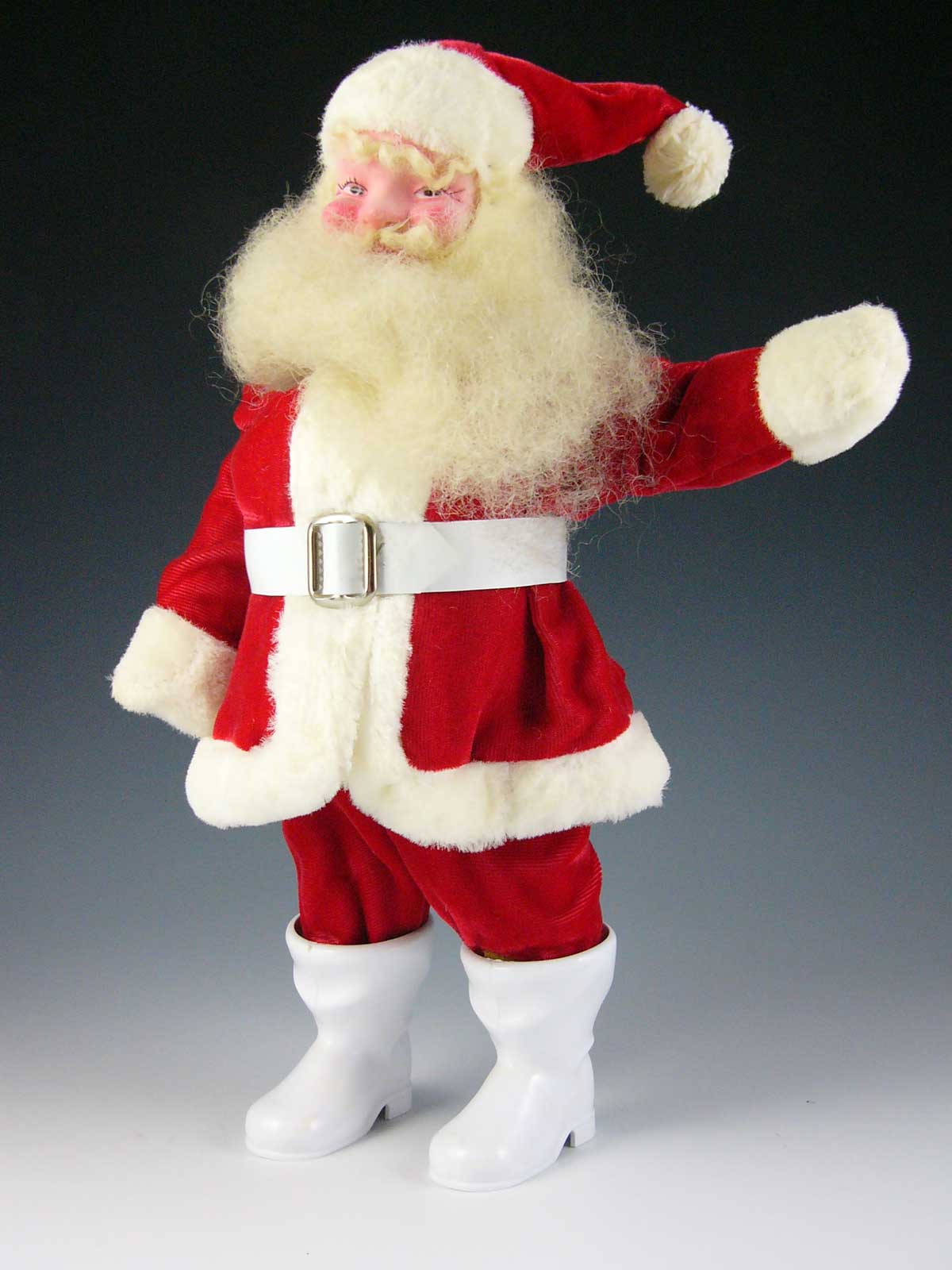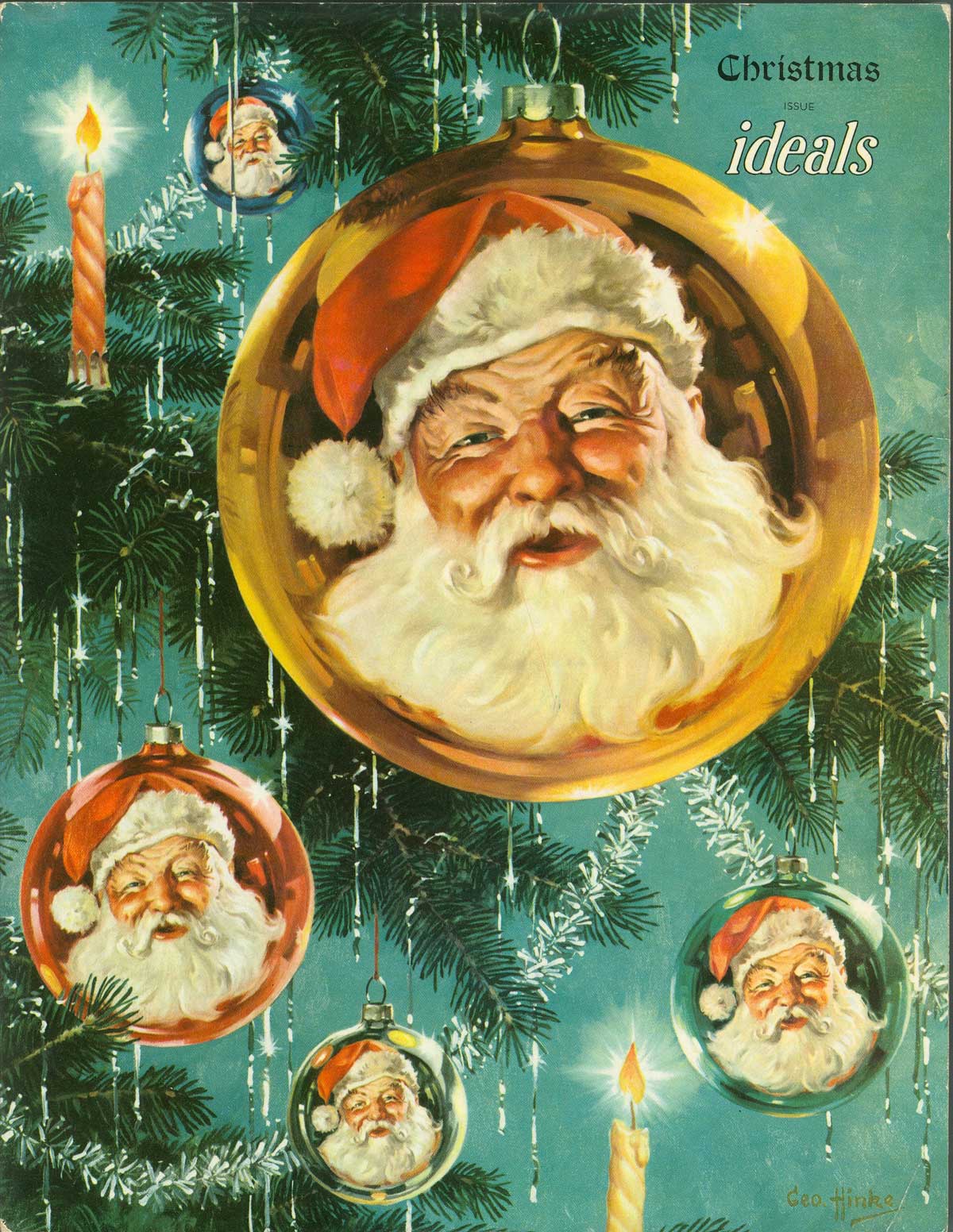Here comes Santa Claus!
December 2025
SMACK DAB IN THE MIDDLE
Here comes Santa Claus!
by Donald-Brian Johnson
“Here comes Santa Claus,
Here comes Santa Claus,
Right down Santa Claus lane!”
– Gene Autry & Oakley Haldeman, 1947
Santa. St. Nick. Father Christmas. No matter what they call him in your neck of the woods, it’s Christmas time again, and. . .he’s baaaack!
Although the custom of Christmas gift-giving originates with the Three Kings, the legend of Santa Claus dates to the fourth century. Stories of his origin vary, but here’s one favorite:
The setting was Asia Minor, where a down-on-his luck nobleman found himself unable to cough up dowries for his three daughters. Enter St. Nicholas, a kindly (and well-to-do) bishop, who crept to the man’s home one wintry eve. With exceptionally good aim, he tossed the three bags of gold he’d brought along through an open window. They conveniently landed in three stockings left hanging to dry before a roaring fire. The result: dowries for each daughter. Thanks to some sleuthing on the part of the happy nobleman, his mysterious benefactor was identified, and tales of the generosity of St. Nicholas soon became legend.
Early helpers of St. Nicholas (i.e., parents), stayed with the stuffed-stocking theme, although bags of gold were quickly replaced by apples, oranges, candies, and small, homemade toys. Other cultures offered their own variations. Children in the Netherlands filled wooden shoes with hay, for the horses accompanying “Sinter Klaas” (that’s Dutch for “St. Nicholas”). The next morning, delightful goodies had miraculously taken the place of the hay. Italian children waited until Jan. 6, the “Feast of the Three Kings,” for the arrival of “La Befana,” who filled their empty shoes with treats. For Puerto Rican boys and girls, the Epiphany was also eagerly anticipated. Tiny boxes filled with munchies for the Wise Men’s camels — leaves and other vegetation — were replaced by morning, with the sort of munchies human children enjoy.
St. Nicholas made his way to America with Dutch immigrants in the 1600s. Mispronunciations of “Sinter Klaas” by those unfamiliar with the language eventually resulted in the name we now know and love: “Santa Claus!”

A standing Santa, red velvet and white plastic costume, papier- maché head. 13-1/2” h. (Image courtesy of the author)

Santa Claus, as baby-boomers remember him. A treeful of smiling Santas, by artist George Hinke, graces the cover of Ideals, 1950 holiday edition. (Image courtesy of the author)
Initial depictions of Santa offer us a thin man with a long, scraggly white beard, clad in what appears to be a hooded, floor-length red bathrobe. Even Clement Clarke Moore’s 1822 poem, “A Visit from St. Nicholas,” which cemented in the popular consciousness such images as “stockings hung by the chimney with care,” “eight tiny reindeer,” and unannounced entrances via chimney, referred to Santa as a “right jolly old elf.” Early illustrations accompanying Moore’s poem accented Santa’s gnomish, elf-like appearance (Moore is said to have based the characterization on his right jolly old handyman, Jay Duyckinck).
The image of a roly-poly, human-sized gent in red suit and fluffy white beard came courtesy of Harper’s Bazaar illustrator Thomas Nast in the 1860s. That visual, refined since then in countless Coca-Cola ads and Ideals magazine covers, is essentially “Santa” as we recognize him today.
Stores jumped on Santa’s sleigh as early as the 1820s. In 1841, a life-sized Santa figure in a Philadelphia shop window attracted hordes of eager youngsters, who dragged along their toy-buying parents, much to the owner’s delight. Live department store Santas soon followed, as did “Letters to Santa,” those annual wish lists which turned such tiny towns as “Santa Claus, Indiana” into postal Meccas.
For collectors of Christmas memorabilia, there’s a boundless treasure trove of Santa depictions to choose from. There are Santa figurines. Santa bubble lights. Plastic wall Santas. Some Santas even talk: push the button, and a merry voice booms out “Ho, ho, ho! I’m Santa!” (As if introductions were really needed!)
No matter how many Santas you collect, you’ll never run out of options. No matter how much time you have, you’ll always need more. Because no matter how jolly your latest white-bearded, red-suited acquisition, the next one might be even jollier!
Time to start making that list (and checking it twice).
Merry Christmas!
Giving thanks for Betty Crocker
November 2025SMACK DAB IN THE MIDDLE Giving thanks for Betty Crockerby Donald-Brian Johnson Thanksgiving dinner at my house?Why, sure. Say, could you bring the rolls? And the cranberries? And the vegetables and mashed potatoes? Oh, and the turkey and stuffing. And a...
You say it’s your birthday?
October 2025SMACK DAB IN THE MIDDLE You say it’s your birthday?by Donald-Brian Johnson “Birthdays,” noted one anonymous quipster, “are like uncomfortable under-shorts. They creep up on you.” Inelegant, yet apt. But look on the bright side: when else do you get a day’s...
Rally ‘round the flags! Souvenir Travel Pennants
September 2025 SMACK DAB IN THE MIDDLE Rally ‘round the flags! Souvenir Travel Pennants by Donald-Brian Johnson Pennants fluttered from the lances of medieval knights as horses thundered into battle. They let sea captains know which approaching vessels were warships,...
Collect-O-Mania: Celebrating CAS Collectors
August 2025SMACK DAB IN THE MIDDLE Collect-O-Mania: Celebrating CAS Collectorsby Donald-Brian JohnsonDo you collect thimbles? There’s a collector’s club just for you. Depression glass? Ditto. Washing machines? We’ve got you covered. Whether the subject is...
Food for thought: Feed sack art
June 2025SMACK DAB IN THE MIDDLE Food for thought: Feed sack artby Donald-Brian Johnson Beaming bakers. Knights in armor. Singing chickens, a solemn Sphinx, and even a corn cob or two, outfitted with airplane wings.What gives? Well, one and all are examples of “feed...
Horsing around: Collectible horse figurines
May 2025SMACK DAB IN THE MIDDLE Horsing around: Collectible horse figurinesby Donald-Brian Johnson Horses are the stuff dreams are made of. “Trigger”. . .”Black Beauty”. . .”Misty of Chincoteague”. . .“Fury.” Horses are strong. They’re brave and loyal. Sometimes,...

